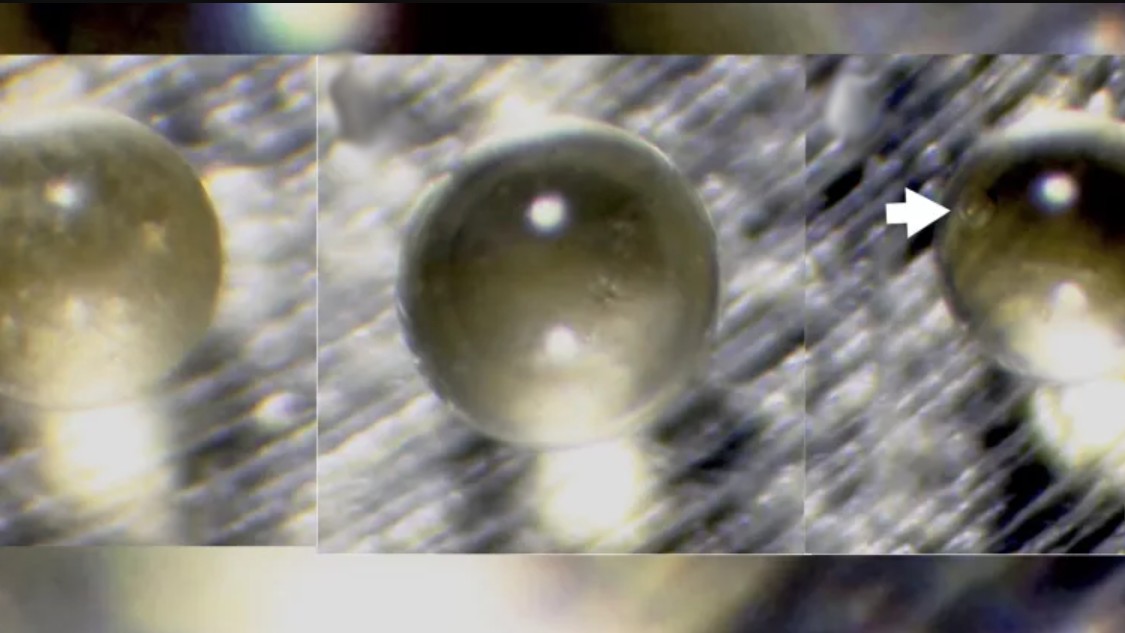
Chinese researchers may have discovered billions of tons of water inside strange glass spheres buried on the moon, and they could be used as a future water source for moon bases, a new study suggests.
The tiny glass spherules, collected in lunar soil samples and brought to Earth by China's Chang'e-5 mission in December 2020, could be so abundant that they store up to 330 billion tons (300 billion metric tons) of water across the moon's surface, the new analysis, published March 28 in the journal Nature Geoscience, shows.
Related: China is hunting the world's most elusive particles a mile beneath the ocean floor
The glass spherules, also known as impact glasses or microtektites, form when meteorites smash into the moon at tens to hundreds of thousands of miles per hour, blasting chunks of lunar crust above the moon's surface. Inside these plumes, silicate minerals heated to molten temperatures by the force of the impact combine to form tiny glass beads that are sprinkled like crumbs over the surrounding landscape.
The moon's soil contains oxygen, which means that the beads do too. When struck with ionized hydrogen atoms (protons) from solar wind, the oxygen in the molten spheres reacts to form water that is sucked inside the silicate capsules. Over time, some of the spheres become buried beneath lunar dust particles, known as regolith, and are trapped underground with the water still inside.
At the right temperatures, some of these beads release the water into the moon's atmosphere and onto its surface, acting as a reservoir that is slowly refilled over time, the researchers said. This could make these spheres an ideal source of water, as well as hydrogen and oxygen, for space agencies like NASA and the China National Space Administration (CNSA) that want to build bases on the moon. The CSNSA expects its moon base project to be completed as soon as 2029.
"If we want to extract the water in impact glass beads for future lunar exploration, first we collect them, then boil them in an oven and cool the released water vapor. Finally, you will get some liquid water in a bottle," study co-author Sen Hu, a planetary geologist at the Chinese Academy of Sciences' Institute of Geology and Geophysics, told Live Science in an email. "Another benefit is that impact glass beads are [common] in lunar soils, from equator to polar and from east to west, globally and evenly."
China's Chang'e 5 mission, named for a Chinese goddess of the moon, was the fifth in a series of missions that aim to lay the groundwork for future human landings on the moon's surface. The mission landed on the moon to scoop material from its surface before returning to Earth in December 2020.







